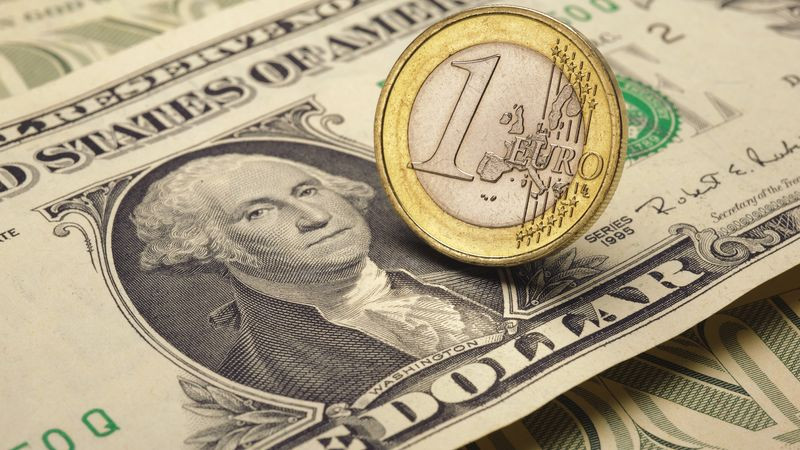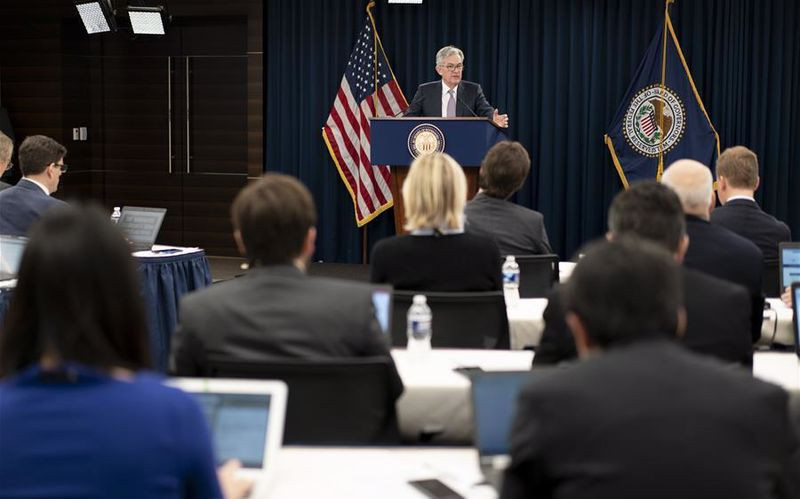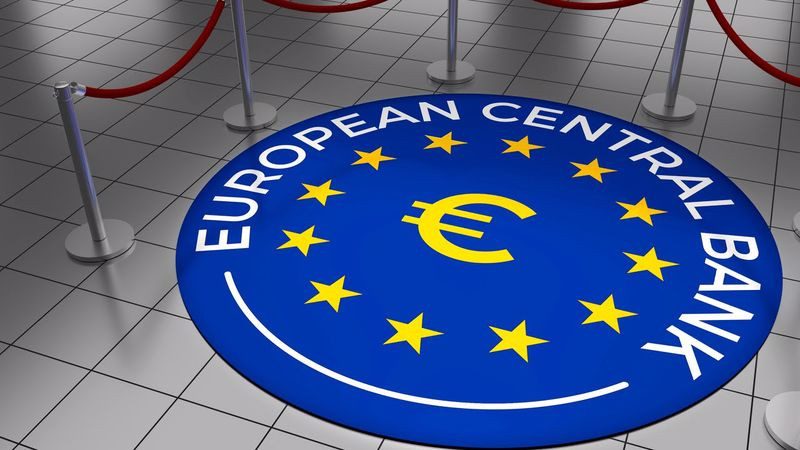
Following the results of yesterday's trading, the S&P 500 index retreated from record peaks amid the desire of investors to lock in profits ahead of the December FOMC meeting.
Low interest rates and the Federal Reserve's "cheap money" policy have contributed to an impressive stock market rally this year, and the cancellation of this support may lead to a drop in quotes, some investors believe.
In reality, there is a huge amount of liquidity on the market and a very high demand for income from assets, so only a much more aggressive tightening of the Fed's monetary policy can shake the stock market.
A similar statement is true for the US currency, which on Tuesday reached a weekly high around 96.46 points, after which it slightly adjusted.
"The dollar may rise if the Fed's policy is more aggressive than expected, which may dissuade investors from switching to risk," Cambridge Global Payments analysts said.
The greenback is trading in the middle of a two-week range while investors are trying to figure out how quickly the US central bank will wind down its asset purchase program and start raising rates in 2022.
The redemption of USD drawdowns remains the dominant topic in the market, and in the coming weeks we may witness a confident continuation of the bullish momentum, especially if the Fed meeting strengthens the recent hawkish turn of Chairman Jerome Powell.
Money markets currently see good chances of an increase in the federal funds rate by June 2022 and at least expect another increase - already in November.
"This sets the bar very high for the Fed to deliver a hawkish surprise," Westpac strategists said.
"But even if the US central bank simply meets the increased expectations of the market, it is still several steps ahead of its European counterpart, which is looking for ways to maintain adaptability after its Pandemic Emergency Procurement Program (PEPP) ends in March," they added.
Although the growth of the USD index has slowed down recently, pullbacks to the 95 level are a good opportunity to buy the US currency, Westpac believes.
If on the eve of the dynamics of the main currency pair was determined by the demand for risk and the US dollar, today the issues of economic growth and discrepancies in the monetary policy of central banks on both sides of the Atlantic are coming to the fore.
A two-day FOMC meeting starts on Tuesday.

"The Fed leadership is likely to demonstrate a more hawkish attitude at the central bank meeting this week than in November. It is assumed that the pace of QE curtailment will be accelerated, and the dot chart will reflect a rate increase of 50 basis points in 2022. We believe that the slowdown in inflation and the economy in 2022 will be sufficient to delay the rate hike until 2023, but now strong data suggest a hawkish attitude," TD Securities analysts said.
Back in November, the Fed announced that it was reducing its $120 billion monthly bond purchase program by $15 billion. Investors expect the central bank to increase the pace of QE curtailment to $30 billion. That would mean three more months of cuts to complete the scheme, as the Fed is on track to buy $90 billion worth of assets in December.
While markets are nervous about the prospect of fewer dollars printed, they are also worried about higher interest rates. These expectations have already caused disruptions in stocks and a significant strengthening of the dollar.
March is the time when the Fed is likely to refrain from expanding its balance sheet and when the central bank will be able to raise rates.
It is still unclear whether the central bank will take a step in this direction in the spring or wait longer, and how many such steps it plans to take in 2022.
Some answers will be given in the forecasts of the Fed in the form of a so-called "dot chart".
In addition, the central bank will publish its estimates on inflation, employment and economic growth. However, for the markets, economic data are of little interest, while forecasts of borrowing costs are given close attention.
Back in September, only half of FOMC members thought they would need to start raising rates next year. Given the "red-hot" economy and especially high inflation, most Fed officials are likely already leaning in favor of raising rates, and the median of these forecasts is crucial for the dollar and the US stock market.
There are four scenarios:
1. Only one promotion
This scenario is the mildest and least likely. If Fed officials believe that falling oil prices, reducing the chip deficit and weakening budget support in 2022 will significantly reduce inflation, they may decide that one round of interest rate hikes will be enough.
Although such an outcome is at odds with recent statements by Fed officials and seems unlikely, it is capable of shocking dollar bulls, which will result in a grandiose fall of the greenback, while the stock market will rejoice.
2. Two rounds
This scenario has a medium-high probability and will leave the Fed one step behind the markets. In this case, the dollar will fail, but it will not fall much.
The impact on stocks is likely to be more significant – the gradual expansion of the "Santa Claus Rally".
3. Three promotions
Such an outcome has the highest probability, which, however, is only slightly higher than the previous one. This would show that Fed members have taken a more anxious stance on inflation and would ensure an early transition to tightening in March.
Despite the fact that this would only align the Fed's position with market expectations, such a sentiment would still be considered hawkish and could give the dollar another small boost. The shares will suffer in this case and will experience difficulties in the following weeks.
4. Four steps
This is a shock scenario. The quarterly rate increase will exceed market estimates. This would mean serious concern of the US central bank about prices, as well as a shortage of labor.
Brandishing a big bazooka, the Fed could eventually refrain from going all the way. However, stocks may suffer a lot, and Christmas will be sad for them. For the dollar bulls, 2021 will end with fireworks. However, the probability of this scenario is low.
According to Goldman Sachs strategists, in the near future, the vector of movement of the US dollar may set the point forecast of the US central bank on rates.
"If tomorrow the FOMC point forecast reflects two rate hikes in 2022, we may see a continuation of the recent weakening of the USD. Meanwhile, the forecast of three or more increases in the new year will allow the greenback to strengthen its position. After December, incoming inflation data may set the tone for dollar trading," they said.
"As part of our baseline scenario, which provides for three Fed rate hikes in 2022, as well as strong global economic growth, we expect USD to trade in the range against EUR and other Big Ten currencies," Goldman Sachs added.

Meanwhile, Scotiabank analysts believe that the European Central Bank's policy will continue to diverge further from the Fed's rate, which will cause the main currency pair to fall to 1.1000.
"Following the results of this week's meeting, the ECB may refrain from making a decision on the replacement of PEPP after its completion in March. Before the appearance of Omicron, it was expected that the central bank would show a less dovish attitude and express optimism about the economic recovery. However, a new wave of COVID-19 morbidity and new restrictions in the EU may reduce production in the next few weeks, and even months, which may keep the ECB from optimism. The policy of the ECB is likely to continue to diverge further from the Fed's policy, which will cause the pair to fall to 1.1000 on the short-term horizon," they said.
Although the dollar's prospects look quite positive right now due to the Fed's willingness to accelerate the curtailment of QE, it is possible that in the coming months the single currency will "revive" if the ECB takes measures in response to stable inflation in the eurozone.
In addition, the American economy is likely to slow relatively faster than the European one, after having overtaken it since the stimulus-fueled recovery from the worst phase of the pandemic began. Taking into account the potential increase in taxes and some tightening of monetary policy in the United States, the probability of an early formation of a peak in the dollar does exist.
So far, the fungus remains strong, and the position of the single currency still looks shaky due to expectations that the Fed will tighten policy faster than the ECB.
The technical picture also does not indicate a recovery of the EUR/USD pair in the near term, as it continues to trade in a descending triangle. The RSI index remains below the 50 mark, confirming that bulls are not yet able to take control of the pair into their own hands.
Currently, the pair is testing the strength of the 1.1280 level, near which the 100-day moving average passes. Next, a strong barrier is in the area of 1.1300 (the downward trend line). This zone is also strengthened by the 20- and 50-day moving averages. Until the bulls turn this area into support, the pair is unlikely to be able to start a convincing recovery.
The key support is located at 1.1270. Closing below this mark will provide the pair with additional losses and a drawdown to 1.1240 and 1.1210.
 English
English 
 Русский
Русский Bahasa Indonesia
Bahasa Indonesia Bahasa Malay
Bahasa Malay ไทย
ไทย Español
Español Deutsch
Deutsch Български
Български Français
Français Tiếng Việt
Tiếng Việt 中文
中文 বাংলা
বাংলা हिन्दी
हिन्दी Čeština
Čeština Українська
Українська Română
Română

